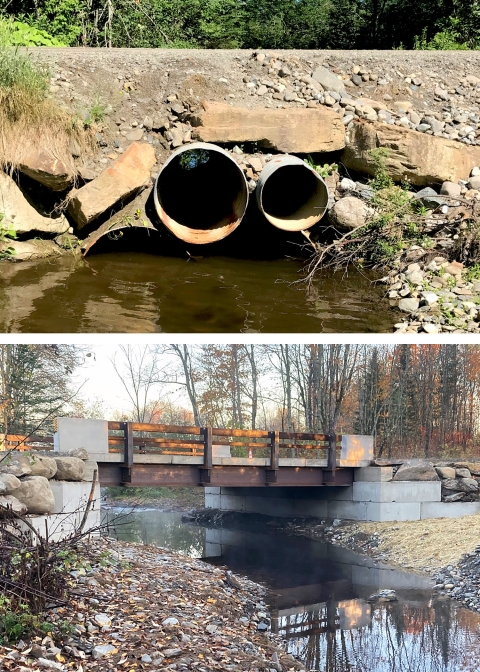Fish passage is the ability of fish or other aquatic species to move freely throughout their life to find food, reproduce, and complete their natural migration cycles. In a healthy aquatic ecosystem, energy, matter, and animals move in all directions throughout the water: upstream and downstream, within the water column, and across waterbodies or floodplains. When the ability to move freely is blocked by a culvert, dam, or other instream barrier, it can lead to species declines, disruption to the ecosystem, and dangerous conditions for surrounding communities.
Barriers like culverts and dams block fish passage in millions of waterways across the globe leading to species declines and even extinctions.
Fish passage projects improve the health of the ecosystem by modifying or removing dams, culverts, and other barriers that restrict fish migration. Fish passage projects can also install green infrastructure that is more resilient to climate change climate change
Climate change includes both global warming driven by human-induced emissions of greenhouse gases and the resulting large-scale shifts in weather patterns. Though there have been previous periods of climatic change, since the mid-20th century humans have had an unprecedented impact on Earth's climate system and caused change on a global scale.
Learn more about climate change , construct barriers to prevent the spread of non-native species, or create nature-like fishways and channels that allow fish to bypass barriers that cannot be removed.
The National Fish Passage Program is one of many efforts across the federal government working to connecting watersheds and people. This program has decades of experience implementing projects in collaboration with other federal agencies, Tribes, states, and our non-profit partners. They work with communities to remove obsolete and dangerous barriers, permanently eliminating public safety hazards and restoring river ecosystems. The resulting infrastructure benefits communities by reconnecting aquatic habitat, increasing flood resilience, and saving money in long-term repair and replacement costs.
The Bipartisan Infrastructure Law , signed in November 2021, included an additional $200 million for restoring fish and wildlife passage by removing in-stream barriers and providing technical assistance under the National Fish Passage Program. The funding is distributed over five years, providing a once-in-a-generation opportunity to invest in our nation’s rivers, streams, and communities.

